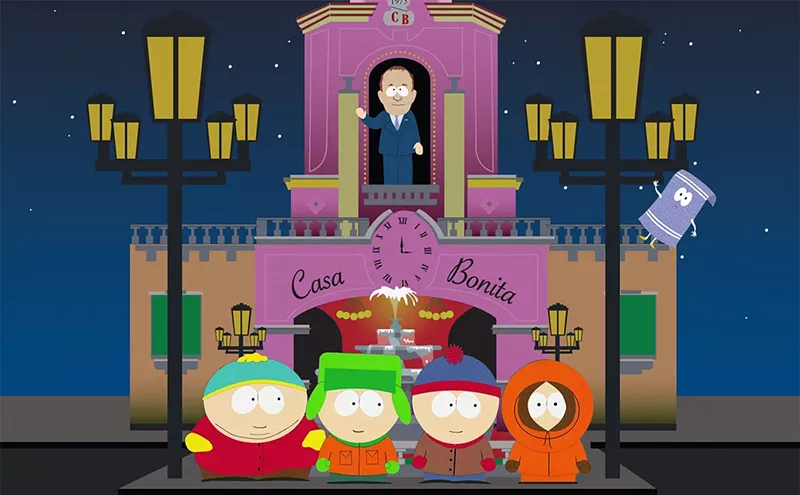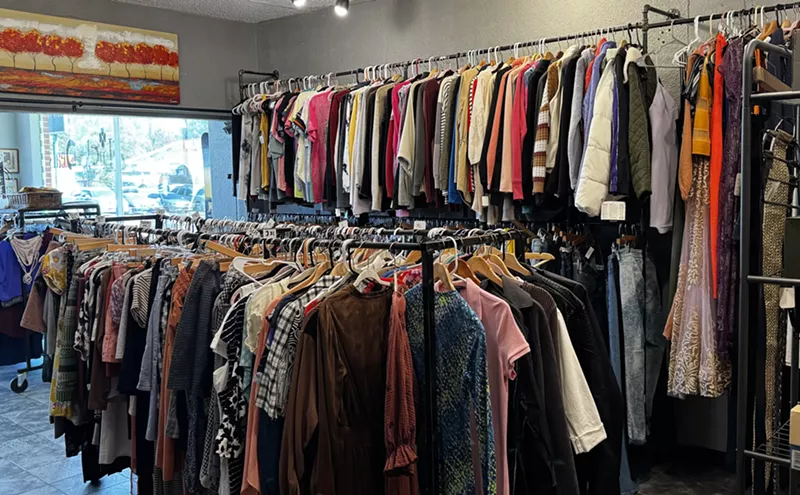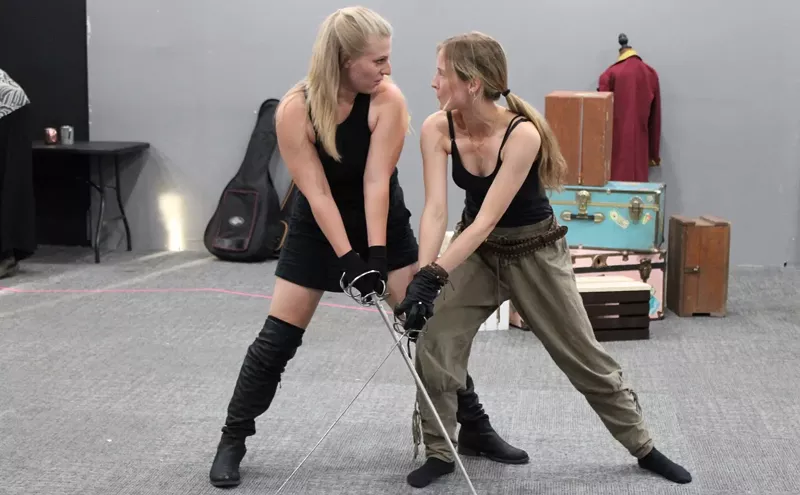Denver Art Museum director Christoph Heinrich has a gift for understanding how to attract an audience. His secret is presenting exhibits that appeal not only to the art crowd, but also to the general population. These blockbusters — dubbed as "beacons" by Heinrich — zero in on a topic of wide interest, and each has been a home run. Last year, there was Becoming van Gogh, which was so popular that the museum stayed open 24 hours a day toward the end of its run. The three exhibits that made up Passport to Paris, which closed earlier this year, were nearly as popular. In both cases, the appeal was keyed to the big-name art stars included. But in the case of both shows, most of the work in them could be called contextual, with very few truly significant pieces and nary a masterpiece to be found.
Modern Masters: 20th Century Icons From the Albright-Knox Art Gallery is another animal altogether. Although this blockbuster, which is currently open, is also focused on famous artists, the included pieces are major works or acknowledged masterpieces rather than also-rans.
Modern Masters is a traveling show, and the host curator here was Dean Sobel, the director of the Clyfford Still Museum next door. (Sobel has also curated a related show at the Still called 1959: The Albright-Knox Art Gallery Exhibition Recreated, which is made up of the material from one of Still's rare lifetime solos; I'll review that in an upcoming issue.) Sobel really knows his modernism, as the insightful and informative layout of Modern Masters reveals. Though there are didactic materials like those annoying audio devices (which I passed up), Sobel lets the work speak for itself and doesn't clutter up the place with too many digital gewgaws or other things to distract from the masterpieces themselves.
There is a subtext to the show, about how it came to be that the Albright-Knox, a museum in Buffalo, New York, wound up with this kind of material. It turns out that it had to do with two visionary donors: zillionaire A. Conger Goodyear and, later, wealthy benefactor Seymour Knox Jr., who donated more than 700 works and a ton of money. A more complete accounting of this history, including the story of Goodyear's being thrown off the museum's board for acquiring a very tame Rose Period Picasso, "La Toilette" (which is in the show), may be found in the accompanying book, available in the DAM's gift shop.
Sobel has arranged the collection in a rough chronology in the maze of galleries on the second level of the Hamilton Building. Since movements overlap in time, he also took stylistic concerns into account, putting cubism with cubism, surrealism with surrealism, and so on.
There's not room on this page to fully account for even the standouts in Modern Masters, but I'll take a stab at it. The show gets under way with a number of fine works, including a nice Rousseau and a choice van Gogh. And then there's Gauguin's "Spirit of the Dead Watching," which encapsulates the painter's contributions to art. Representing his Tahitian period, it shows a languorous nude female sleeping while the ominous mask of death appears behind her. It's a savage odalisque, with even the technique looking like the work of a wildman. Then, in the space beyond, is a marvelous Matisse, a charming Modigliani, a striking Chagall, and the Picasso that cost Goodyear his board of directors post (though he ultimately triumphed and remained involved with the Albright-Knox for decades after that humiliating event). It culminates with one of the most advanced paintings ever done: Wassily Kandinsky's completely non-objective "Fragment 2 for Composition VII," from 1913. Wow.
Next is a multi-room section on cubism and its cousins in both European and American art. Take a close look at that Giacomo Balla (and at those dashes of color that make up the painting's ground), which proves that futurism is not only coming out of cubism, but has a lot of post-impressionism in it, too. There's also a stunning Arthur Dove and an engaging Stuart Davis. And don't miss the Fernand Leger and the Robert Delaunay, because it doesn't get any better than these.
Surrealism is up next, including a signature de Chirico (technically not a surrealist) and a spectacular Yves Tanguy. But the tour de force is Miró's "Carnival of Harlequin," from 1924-25, one of his earliest masterworks, and one in which there is a clear indication of where art was headed in the next generation. There's an all-over quality to the composition, and although there are recognizable elements, the effect — with the dominant ground and all of those organic lines and shapes — is one of total abstraction.
This surrealist passage is followed up by one devoted to expressionism, including an important Chaim Soutine and a major Max Beckmann. But surely it's Giacometti's "Walking Man," one of the handful of sculptures in Modern Masters, that grabs our immediate attention. And as you look at it, you'll notice beyond it the start of the most incredible part of the show, and the one for which the preceding few spaces have been preparing us: the rooms devoted to abstract expressionism.
The Albright-Knox amassed a stunning collection of abstract-expressionist pieces, including some of the most significant works of that movement. There's "The Liver Is the Cock's Comb," by Arshile Gorky, which is very Picassoid. There's "Elegy to the Spanish Republic XXXIV," by Robert Motherwell, which is among the best of the many "Elegy" paintings he did. There's Willem de Kooning's "Gotham News," which is more abstract than is typical for him. There's Mark Rothko's "Orange and Yellow," a monument to that artist's proto-color-field approach. And there's Jackson Pollock's "Convergence," one of his last great drip paintings and one of the largest he ever did. Every one of these works is recognized in art history as being emblematic of the movement, and I can almost guarantee that you will recognize them from cards, posters or reproductions that you've seen in books or on the Internet.
Also among the abstract-expressionist treasures are major works by Joan Mitchell, Clyfford Still, Richard Diebenkorn, Sam Francis and Philip Guston, as well as one of the best Lee Krasner paintings around.
The final sections are anti-climatic, not only because color field and minimalism — which come next in the chronology — aren't as juicy and eye-popping as abstract expressionism, but because the works in these final moments of the show are clearly more modest in size, if not ambition (maybe the money Albright-Knox had for acquisition became tighter). In truth, though, it's rare to see a Lee Bontecou or a Lucio Fontana — as you can in this show — regardless of size. There's also a quartet of pop pieces, including a Warhol and a Lichtenstein, but these, too, are more modest than the abstract-expressionist ones that will linger in your mind.
I'll make my recommendation concerning Modern Masters at the DAM as blunt as possible: Don't even pretend you're interested in art if you wind up missing this show.











